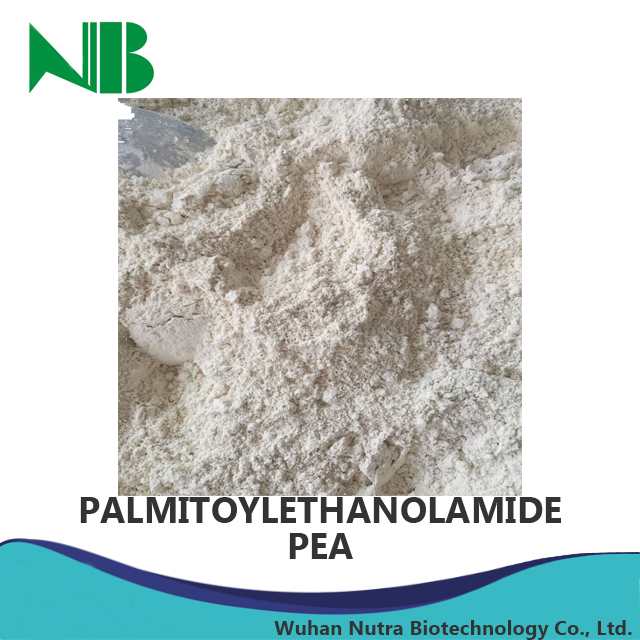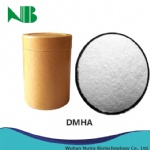PALMITOYLETHANOLAMIDE (PEA)
Product Description:
Product Name: PALMITOYLETHANOLAMIDE
Synonyms: N-(2-HYDROXYETHYL)HEXADECANAMIDE;N-HEXADECANOYLETHANOLAMINE;PEA PALMIDROL;PALMITYLETHANOLAMIDE;PALMITOYLETHANOLAMIDE;PALMITOYLETHANOLAMIDE N-(2-HYDROXYETHYL)HEXADECANAMIDE;n-(2-hydroxyethyl)-hexadecanamid;Palmidrol
CAS: 544-31-0
MF: C18H37NO2
MW: 299.49
EINECS: 208-867-9
Palmitoylethanolamide (PEA) is an endogenous fatty acid amide, belonging to the class of nuclear factor agonists. PEA has been demonstrated to bind to a receptor in the cell-nucleus (a nuclear receptor) and exerts a great variety of biological functions related to chronic pain and inflammation. The main target is thought to be the peroxisome proliferator-activated receptor alpha (PPAR-α). PEA also has affinity to cannabinoid-like G-coupled receptors GPR55 and GPR119.[4] PEA cannot strictly be considered a classic endocannabinoid because it lacks affinity for the cannabinoid receptors CB1 and CB2. However, the presence of PEA (and other structurally related N-acylethanolamines) has been known to enhance anandamide activity by a so-called "entourage effect".
Several papers have demonstrated that an imbalance of the endocannabinoid system (ECS) and alterations in the levels of PEA occur in acute and chronic inflammation.[8] For instance during β-amyloid-induced neuroinflammation the deregulation of cannabinoid receptors and its endogenous ligands accompanies the development and progression of disease.
PEA has been shown to have anti-inflammatory,anti-nociceptive,neuroprotective, and anticonvulsant properties.
Synonyms: N-(2-HYDROXYETHYL)HEXADECANAMIDE;N-HEXADECANOYLETHANOLAMINE;PEA PALMIDROL;PALMITYLETHANOLAMIDE;PALMITOYLETHANOLAMIDE;PALMITOYLETHANOLAMIDE N-(2-HYDROXYETHYL)HEXADECANAMIDE;n-(2-hydroxyethyl)-hexadecanamid;Palmidrol
CAS: 544-31-0
MF: C18H37NO2
MW: 299.49
EINECS: 208-867-9
Palmitoylethanolamide (PEA) is an endogenous fatty acid amide, belonging to the class of nuclear factor agonists. PEA has been demonstrated to bind to a receptor in the cell-nucleus (a nuclear receptor) and exerts a great variety of biological functions related to chronic pain and inflammation. The main target is thought to be the peroxisome proliferator-activated receptor alpha (PPAR-α). PEA also has affinity to cannabinoid-like G-coupled receptors GPR55 and GPR119.[4] PEA cannot strictly be considered a classic endocannabinoid because it lacks affinity for the cannabinoid receptors CB1 and CB2. However, the presence of PEA (and other structurally related N-acylethanolamines) has been known to enhance anandamide activity by a so-called "entourage effect".
Several papers have demonstrated that an imbalance of the endocannabinoid system (ECS) and alterations in the levels of PEA occur in acute and chronic inflammation.[8] For instance during β-amyloid-induced neuroinflammation the deregulation of cannabinoid receptors and its endogenous ligands accompanies the development and progression of disease.
PEA has been shown to have anti-inflammatory,anti-nociceptive,neuroprotective, and anticonvulsant properties.
Links:
Copyright © Wuhan Nutra Biotechnology Co., Ltd. All right reserved















